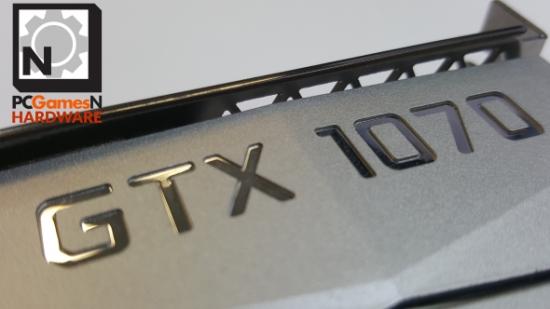The GTX 1070 is one of the best graphics cards of this generation, with performance almost on par with the GTX 1080 but with a price tag which won’t have you remortgaging your house.
Still a little too rich for your blood? Check out our full list of the best graphics cards around right now.
Nvidia are filling out the top and bottom ends of their Pascal GPU lineup with the GTX 1050 and 1050 Ti coming this month and the Titan-esque GTX 1080 Tiarriving as 2017 rolls around, but the current trifecta has still got the gaming goods. The GTX 1070 sits in between the GTX 1060 and GTX 1080 offering decent value and high-end gaming performance.
But with so many different manufacturers putting their own spin on Nvidia’s design which one should you buy? We’ve picked a small selection of factory-overclocked GTX 1070 cards to give you an idea of what you can expect from the different board partners in terms of both high-end frame rates and feature sets.
Click on the quick links below to get straight to the mini-reviews or the full spread of GTX 1070 benchmarks.
-
MSI GTX 1070 GamingX 8G review
-
Zotac GTX 1070 AMP! Extreme review
-
Asus ROG Strix GTX 1070 review
-
GTX 1070 benchmarks
-
GTX 1070 benchmarks verdict
Nvidia GTX 1070 Founders Edition review
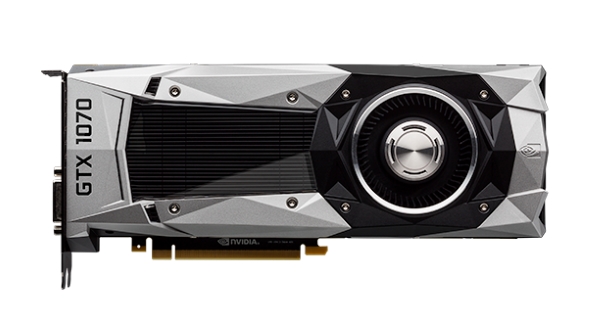
This reference card is the most basic version of the GTX 1070, though Nvidia controversially decided to rename their stock GPUs as Founders Editions and charged a premium for having the GeForce-designed shroud. With an initial street price of $449 the Founders cards were significantly higher than the published MSRP of $379, an MSRP which never appeared. The premium-priced Founders only served to push up the price of the more feature-rich manufacturer-designed versions which followed.
The chrome-finished Founders Edition does have a more understated, classic aesthetic than the more aggressive-looking manufacturer cards, but for that you’re sacrificing performance in both the gaming stakes and in the thermal efficiency too. The two are inextricably linked; with a weaker GPU cooler the card is less capable of dynamically adjusting its clockspeed to higher levels.
That’s why the GTX 1070 Founders Edition is the slowest of all the versions of the card we’ve tested. In the UK though that’s translated into it also being the cheapest version, with a sub-£400 street price. The Founders Edition though has held its price in the US, making it an impossible recommendation over the excellent partner boards which have since come out.
MSI GTX 1070 GamingX 8G review
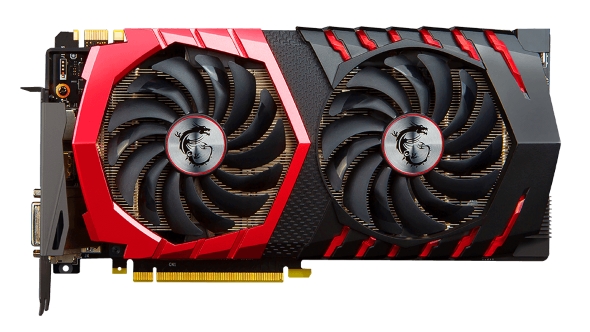
The GamingX sits just behind MSI’s GamingZ version as the second highest overclocked GTX 1070 they produce. With a 1,797MHz peak OC Mode clockspeed, compared with the Founders Edition’s 1,683, the GamingX easily pushes performance ahead of the Nvidia reference card.
It also comes with MSI’s impressive Twin Frozr cooling technology – delivering frosty GPU performance with a seriously quiet pair of fans. When you’re not actually gaming it runs completely silently too – those fans don’t start spinning until you push the efficient GP104 Pascal silicon over 60°C.
The overall design and look is just as impressive too, without the chunky over-the-top stylings of the Zotac card or the broad fan array of the STRIX. Despite the inevitable splash of configurable RGB LEDs the GamingX is a relatively understated card and one that will still fit in most chassis – unlike the massive AMP! Extreme.
Like the AMP! Extreme though it does require extra PCIe power connectors. There’s an additional 6-pin connector on the card which gives it a little extra help when it comes to manually overclocking the GamingX yourself. If you want to get crazy with the voltages the MSI card will happily comply.
Performance wise though it can’t quite keep up with the two more heavily-overclocked cards from Asus and Zotac. Those two have higher out-of-the-box clockspeeds and regularly top the 2GHz mark in-game. That gives them the performance lead despite being around the same price as these other two. That being said, the lead is rarely /that far/ ahead of the MSI card so if you were looking for an efficient, speedy, relatively compact card for your next build the MSI GamingX is still going to deliver an outstanding experience, with some decent 4K prowess too.
Zotac GTX 1070 AMP! Extreme
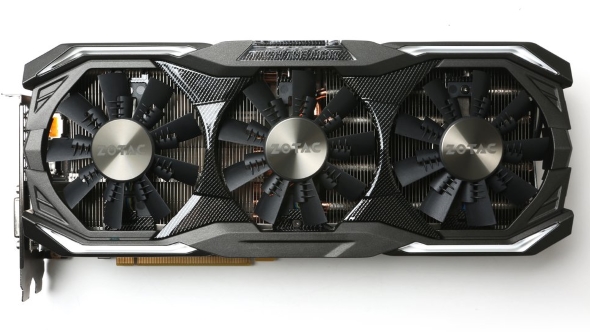
There’s no getting away from it, the Zotac AMP! Extreme is a massive graphics card. It’s not quite a triple-slot card, but it’s not far off double the width of the Founders Edition version. It’s also about an inch taller and good few longer too.
But that means it has a fantastic Icestorm cooler attached to which is both quiet (rocking similar 0dB fans as the other partner boards) and impressively efficient. That thermal performance also means the GP104 GPU has the support to really get into its stride. Although the peak clockspeed is lower than the Asus card below – at 1,835MHz compared with the Strix’s 1,860MHz – the chunky triple-fan cooling array means the chip hits a pretty constant 2GHz frequency in-game.
That little bit of extra performance does allow the AMP! Extreme to generally post the highest gaming frame rates of all the cards in this test, strange Tomb Raider anomaly aside. And it does it all without being too loud or any hotter than the rest. What it does do though is draw a lot more power from the wall than the others. By topping the 300W mark for platform power draw it’s more thirsty even than the GTX 1080, but this is a card less for normal PC gamers looking to just leave the card to get on with its job unsullied by the merciless hand of overclocking. By adding an extra 8-pin PCIe power connector and the Zotac Power Boost technology, to ensure a stable, robust flow of electricity to the card, the AMP! Extreme is a card designed for overclockers to take even further than the Zotac engineers thought prudent for a release card.
But despite its extra performance and overclocking-friendly componentry in real terms it’s not really any different in price compared with the competition.
Asus ROG Strix GTX 1070 review
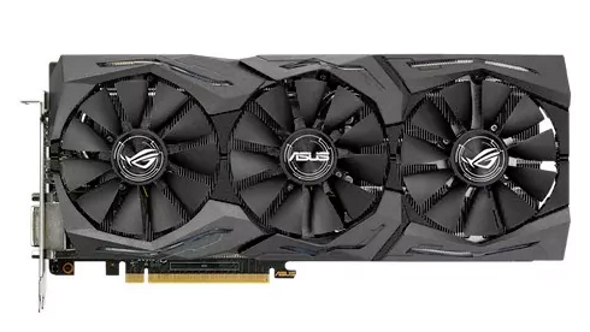
Asus’ Republic of Gamers (ROG) brand represents the pinnacle of their gaming products and the GTX 1070 Strix is no different. It’s peak clockspeed in OC Mode is a heady 1,860MHz – the highest of all the cards in this test – and thanks to its triple fan array it often tops the 2GHz mark in-game. For the most part it sits just below that, but that still means it’s capable of frame rates not far off what a standard GTX 1080 is capable of.
All three of the manufacturer cards in this test are sporting 0dB coolers. The idle performance of Nvidia’s GP104 GPU means it can be cooled purely by the card’s heatsink during standard desktop operation. It’s only when you start pushing gaming loads through it that the temperature tops 60°C and the fans kick in.
The cooling design does make it a larger card, both taller and longer than the standard Nvidia reference card. That’s maybe something to think about if you’re considering dropping the Strix into a smaller chassis with limited space for the GPU.
But it’s not just cooling and clockspeed that mark the Asus card out, they’re also masters at cherry picking the right components. Despite the higher GPU frequency and subsequent performance gains the Strix is only beaten on the efficiency stakes by the power draw of the weaker Founders Edition.
All that means that in gaming performance terms it trades blows with the excellent Zotac card and, for the most part, shares the top frame rate honours with that card. It’s a good deal faster than both the MSI and Founders GTX 1070 cards and has a more efficient, smaller design than the Zotac behemoth. It’s also one of the best value overclocked GTX 1070 cards around too, with an impressively low dollar price and a competitive sterling one.
GTX 1070 benchmarks

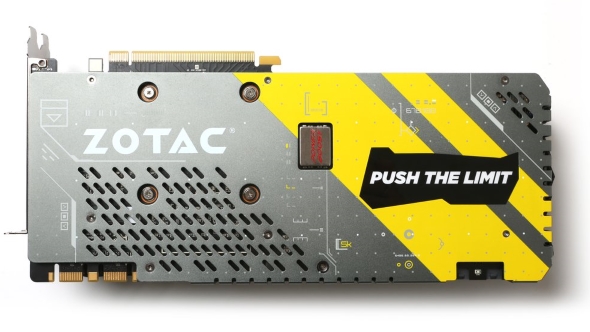
GTX 1070 benchmarks verdict
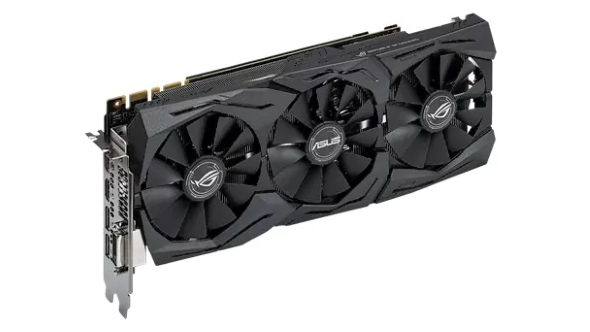
The results from this test prove there are merits to all the different versions of the GTX 1070 we’ve tested here. Well, apart from the frustrating Nvidia Founders Edition. That reference card has the weakest cooler and stock clockspeeds, and yet because of Nvidia’s somewhat predatory pricing it remains around the same price as the far superior partner boards. We’ve found a great deal in the UK, but still in the US you have to pay through the nose. Which is really uncomfortable.
Because of its lower factory overclock the MSI GamingX can’t quite compete in the gaming frame rates, but it’s the smaller of the three partner boards meaning it’s arguably the better choice for a diminutive PC build. And really isn’t too far off the pace.
In the benchmark stakes though I’ve got to give the gaming performance plaudits to the Zotac and Asus cards. Thanks to its slightly higher boosted clockspeed the AMP! Extreme is the overall winner on frame rates. It’s also the card which is going to give the most headroom for serious overclockers to get tweaking with; they’re the ones who will get the most out of that vast graphics card.
But if you aren’t one of those the Asus Strix card has nigh-on the same level of gaming performance, sometimes for a cheaper price and always with a much smaller footprint than the massive Zotac card. For that reason I’m recommending the Asus ROG Strix GTX 1070 as the best of these overclocked cards for the money, though it’s a close run thing.
